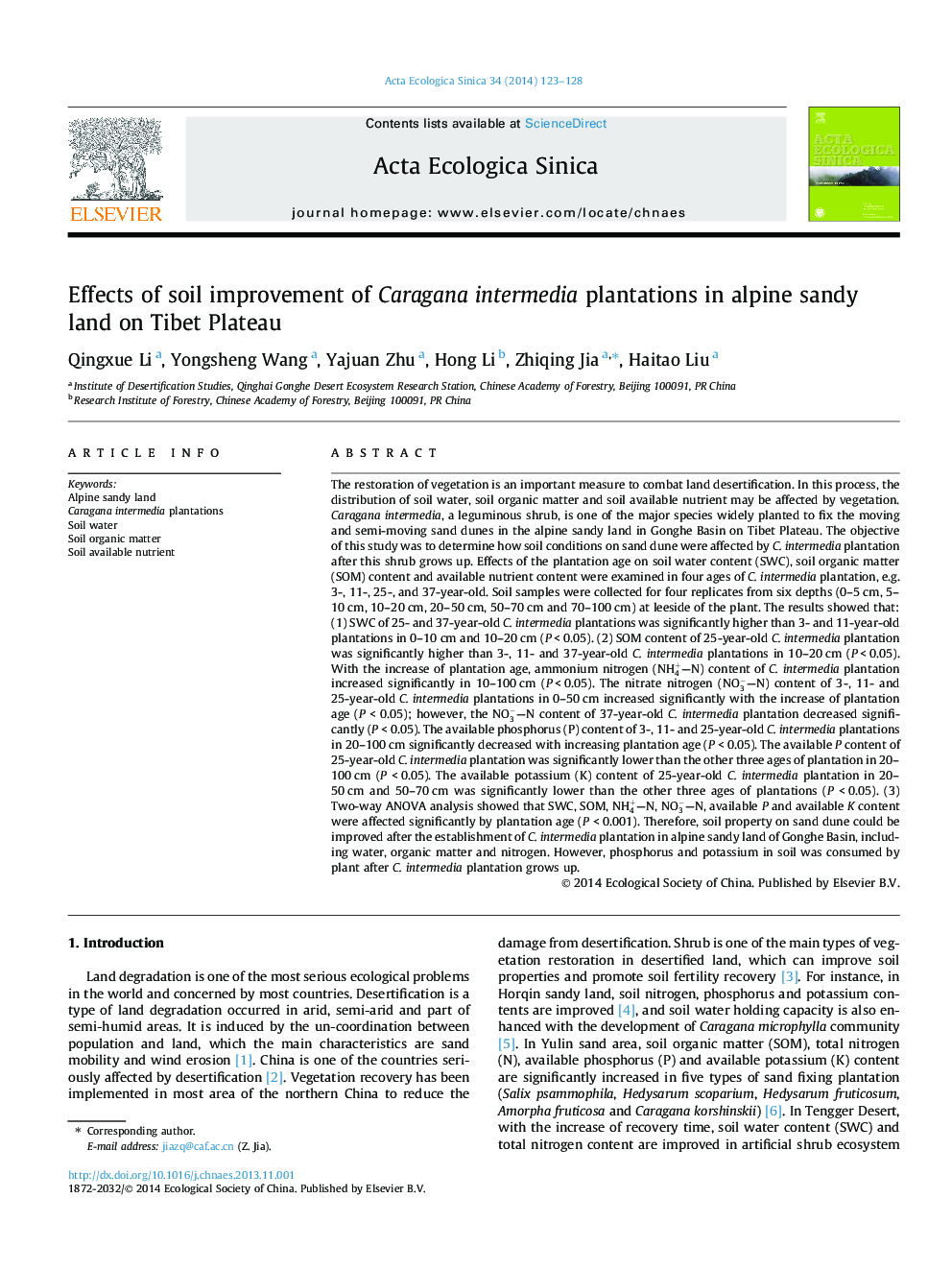| Article ID | Journal | Published Year | Pages | File Type |
|---|---|---|---|---|
| 4379991 | Acta Ecologica Sinica | 2014 | 6 Pages |
The restoration of vegetation is an important measure to combat land desertification. In this process, the distribution of soil water, soil organic matter and soil available nutrient may be affected by vegetation. Caragana intermedia, a leguminous shrub, is one of the major species widely planted to fix the moving and semi-moving sand dunes in the alpine sandy land in Gonghe Basin on Tibet Plateau. The objective of this study was to determine how soil conditions on sand dune were affected by C. intermedia plantation after this shrub grows up. Effects of the plantation age on soil water content (SWC), soil organic matter (SOM) content and available nutrient content were examined in four ages of C. intermedia plantation, e.g. 3-, 11-, 25-, and 37-year-old. Soil samples were collected for four replicates from six depths (0–5 cm, 5–10 cm, 10–20 cm, 20–50 cm, 50–70 cm and 70–100 cm) at leeside of the plant. The results showed that: (1) SWC of 25- and 37-year-old C. intermedia plantations was significantly higher than 3- and 11-year-old plantations in 0–10 cm and 10–20 cm (P < 0.05). (2) SOM content of 25-year-old C. intermedia plantation was significantly higher than 3-, 11- and 37-year-old C. intermedia plantations in 10–20 cm (P < 0.05). With the increase of plantation age, ammonium nitrogen (NH4+–N) content of C. intermedia plantation increased significantly in 10–100 cm (P < 0.05). The nitrate nitrogen (NO3-–N) content of 3-, 11- and 25-year-old C. intermedia plantations in 0–50 cm increased significantly with the increase of plantation age (P < 0.05); however, the NO3-–N content of 37-year-old C. intermedia plantation decreased significantly (P < 0.05). The available phosphorus (P) content of 3-, 11- and 25-year-old C. intermedia plantations in 20–100 cm significantly decreased with increasing plantation age (P < 0.05). The available P content of 25-year-old C. intermedia plantation was significantly lower than the other three ages of plantation in 20–100 cm (P < 0.05). The available potassium (K) content of 25-year-old C. intermedia plantation in 20–50 cm and 50–70 cm was significantly lower than the other three ages of plantations (P < 0.05). (3) Two-way ANOVA analysis showed that SWC, SOM, NH4+–N, NO3-–N, available P and available K content were affected significantly by plantation age (P < 0.001). Therefore, soil property on sand dune could be improved after the establishment of C. intermedia plantation in alpine sandy land of Gonghe Basin, including water, organic matter and nitrogen. However, phosphorus and potassium in soil was consumed by plant after C. intermedia plantation grows up.
